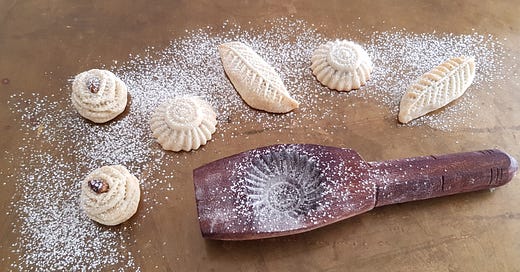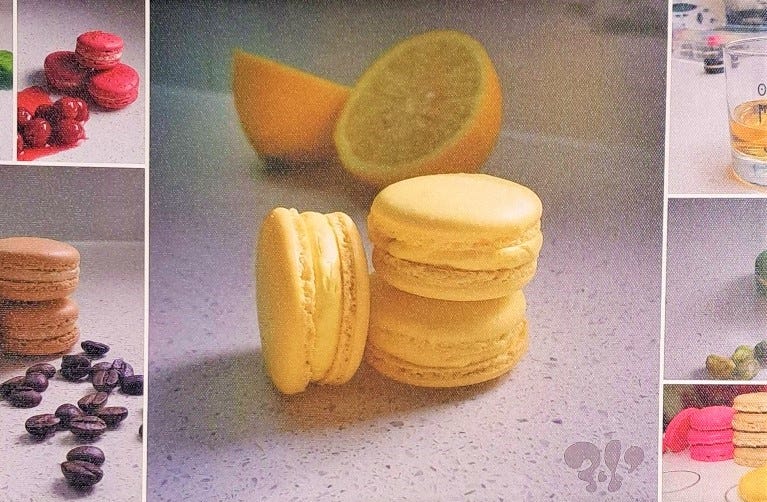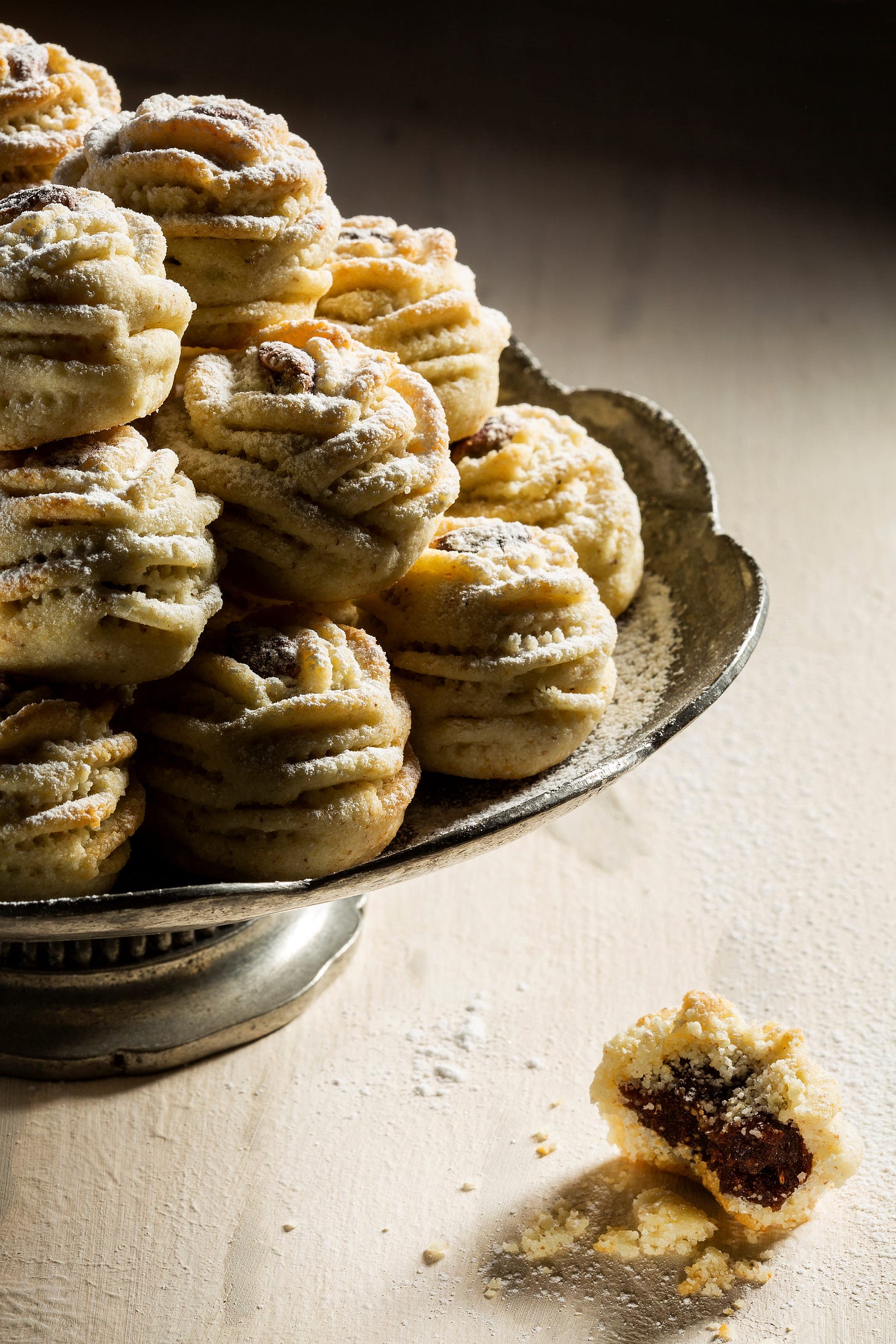Dates have been a principal staple of both the culture and cuisine of Israel for centuries. Date palms have lined the landscape and flourished in the arid climate of the region as far back as the biblical era, where they were often referred to as “trees of life”. Originating from Morocco and the oldest cultivated fruit, the plump, sweet Medjool date has held the title of ‘king of the dates’ throughout the millennium. With Israel holding the majority of the global market share, the Medjool date has become a highly significant ingredient in the celebratory feasts and on breaking the observant fasts of Judaism, Christianity and Islam.
Mammoul, meaning ‘made’ or ‘done’ derived from the Arabic word for work ‘eamil’, is a festive, decorative biscuit that is traditionally eaten at both the religious and secular festivals across all the three faiths. Arousing forgotten childhood memories of shaping, decorating and baking these symbolic biscuits with grandmothers and mothers, the tradition is echoed throughout the community. Each recipe is a family secret, passed down through the generations characteristically determined by a buttery, short pastry filled with a fragrantly spiced date paste, that takes time and work to craft. Each biscuit is individually formed and embossed in a ‘tabbeh’, an ornately carved, hand crafted wooden mould of Lebanese origin.
I recently met Judith Zer-Aviv, known to all as Yud, an Israeli pastry chef born in Switzerland with Spanish ancestry whose creations from her culinary heritage were simply as artistic and beautiful to the eye, as delicious on the palate. Every cake, biscuit and pastry was conjured from a memory of baking with her mother, grandmother, aunts or friends, and with her love and precision for the science of baking inherited from her father, produced stunningly tasty food art with a creative flair, that won many pastry competitions all over the world. We talked for hours discussing the Swiss macarons called the Luxemburgerli, and the difference between this morsel of deliciousness and the French version, as well as so many other cakes, breads and biscuits from her European roots, before moving on to the Maamoul.
Yud described her passion for these intricately decorative biscuits as a “craze” and admitted to having acquired over one hundred different moulds, each with their own pattern to embellish the festive sweetmeat. The conversation swiftly moved to Muzna, her dearest friend and ultimate critic of thirty years from the Arabic city of Taibe, who introduced Yud all those years ago to the maamoul made from semolina and the family’s ‘special’ spice blend, and with it came the present of an authentic mould, called the tabbeh. As the perfect example of a decorative pastry, Yud refined the mammoul under the watchful eye of Muzna, and made the traditional biscuit for a food festival in Rimini, showcasing the bakers “local pastry”. Yud knew that Muzna’s recipe decorated using the intricate mould was a winning pastry, but wasn't bargaining on being asked to give away the mould to a leading Italian chef for his collection of culinary artefacts. She handed it over without hesitation, and returned to Israel with glowing accolades for the mammoul… yet no mould. Although Muzna was understanding, the guilt set in of losing the families treasured tabbeh and Yud set about trying to replace it. She strolled through the old cities of Akko and Jerusalem scouring the market stalls for the identical patterned mould, which she found many years later, having collected over a hundred along the way. Yud has continued to use Muzna’s traditional family recipe over the years shaping and decorating using the variety of patterns from her own collection and creating her own rather unorthodox versions of the maamoul by adding twists to the filling of savoury combinations as well as colouring to the pastry, much to the surprise of the unconvinced Muzna.
The light buttery semolina pastry and the sticky date filling is the customary biscuit for so many religious festivals of all faiths. Decorated by hand using crimpers as well as in moulds, thousands of maamoul have been made by generations of women rejoicing at the kitchen table and filling the home with the sweet, fragrant aromas of festive baking. It is with such delight and honour that I am able to share Muzna’s family recipe with you, which I hope with provoke a culinary memory of your own…
Enjoy!
Muzna’s Maamoul Recipe: Makes 22 biscuits
for the pastry:
500g semolina
200g margarine, melted
220g flour
60g icing sugar
14g baking powder
120mls water (half a cup)
some vanilla extract
2 teaspoons traditional spice mix (made of fennel, anise, nutmeg, cinnamon & cloves)
mix the semolina with the melted margarine, wrap in plastic and leave to soak for a day, add in the flour and rest of the ingredients and knead to form a dough
for the date filling:
500g date paste
3 teaspoons spice mix
some vanilla extract
6 tablespoons olive oil
chopped walnuts
mix the date paste, spice mix, vanilla and oil together then add chopped walnuts and mix well
roll out the pastry to a 4 mm thickness and stamp out circles of 8 cm diameter, place the circle into the socket of a mould, well dusted with icing sugar and remove any excess pastry, fill with some date filling and close with a circle of pastry 6.5 cm in diameter, clamp the mould, then hit it on the table hard and fast to extract the biscuit, bake at 180° for about 25 minutes or until golden, cool and sprinkle well with icing sugar







